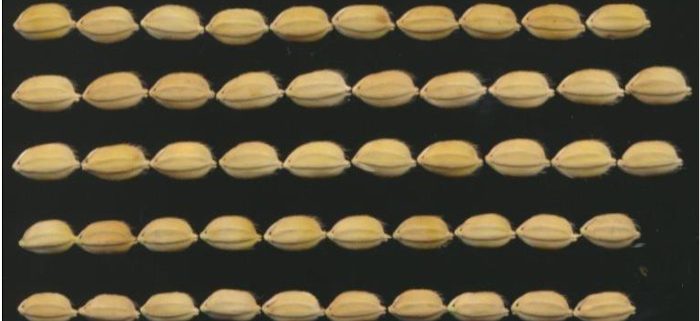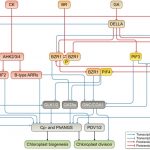Ubiquitylation and grain size in rice
Background: Rice (Oryza sativa L.) is a staple crop that feeds over half of the world’s population and boosting rice yield therefore has critical implications for world food security. Our prior study revealed that GW6a is a crucial genetic modulator of rice grain size and yield, and it encodes a chromatin modifier. However, the genetic factors acting downstream and upstream of GW6a-centered regulation of grain size are currently unknown. Although it has been established that the Arabidopsis ubiquitin receptor DA1 and its close family members regulate seed and organ size, whether these DA1 homologs control grain size in rice remains unclear.
Question: What proteins interact with GW6a and what are the molecular, biochemical, and genetic relationships between GW6a and its interacting factors?
Findings: Using yeast two-hybrid assays, we identified the GW6a-interacting protein HOMOLOGUE of DA1 ON RICE CHROMOSOME 3 (HDR3), which positively regulates rice grain size via modulating cell division in spikelet hulls. HDR3 interacts with and enhances the ubiquitylation of GW6a, yet, unexpectedly, the modification stabilizes GW6a by delaying its degradation via the 26S proteasome. Notably, our genetic and molecular results support the idea that HDR3 acts in a common pathway with GW6a to control grain size in rice.
Next steps: Our findings reveal a non-proteolysis-based mechanism by which the UIM-containing protein HDR3 increases the K63-linked polyubiquitin modification of the histone acetyltransferase GW6a and stabilizes GW6a to modulate grain size. HDR3-mediated ubiquitylation of GW6a may represent a signaling mechanism underlying grain size control, which deserves detailed experimental investigation in the future.
Reference: Qiong Gao, Ning Zhang, Wei-Qing Wang, Shao-Yan Shen, Chen Bai, Xian-Jun Song (2021) The ubiquitin-interacting motif-type ubiquitin receptor HDR3 interacts with and stabilizes the histone acetyltransferase GW6a to control grain size in rice. The Plant Cell, https://doi.org/10.1093/plcell/koab194




